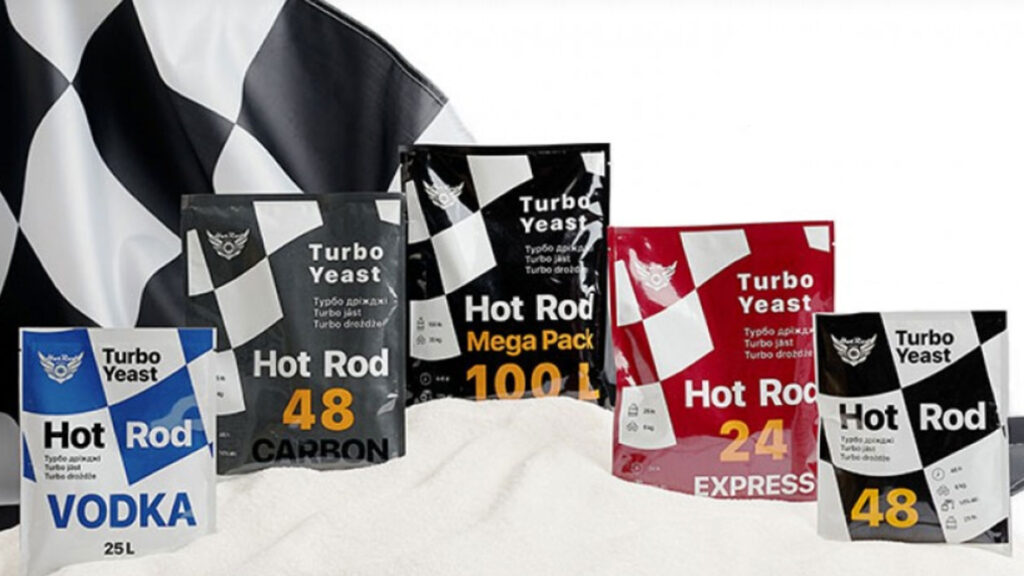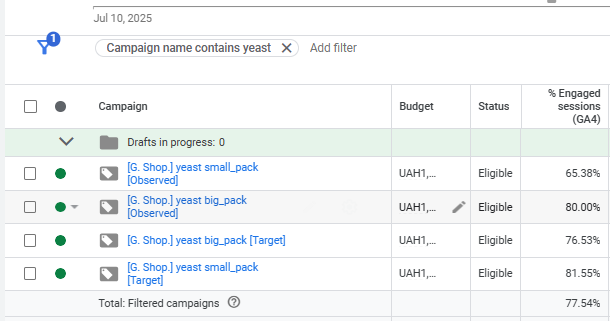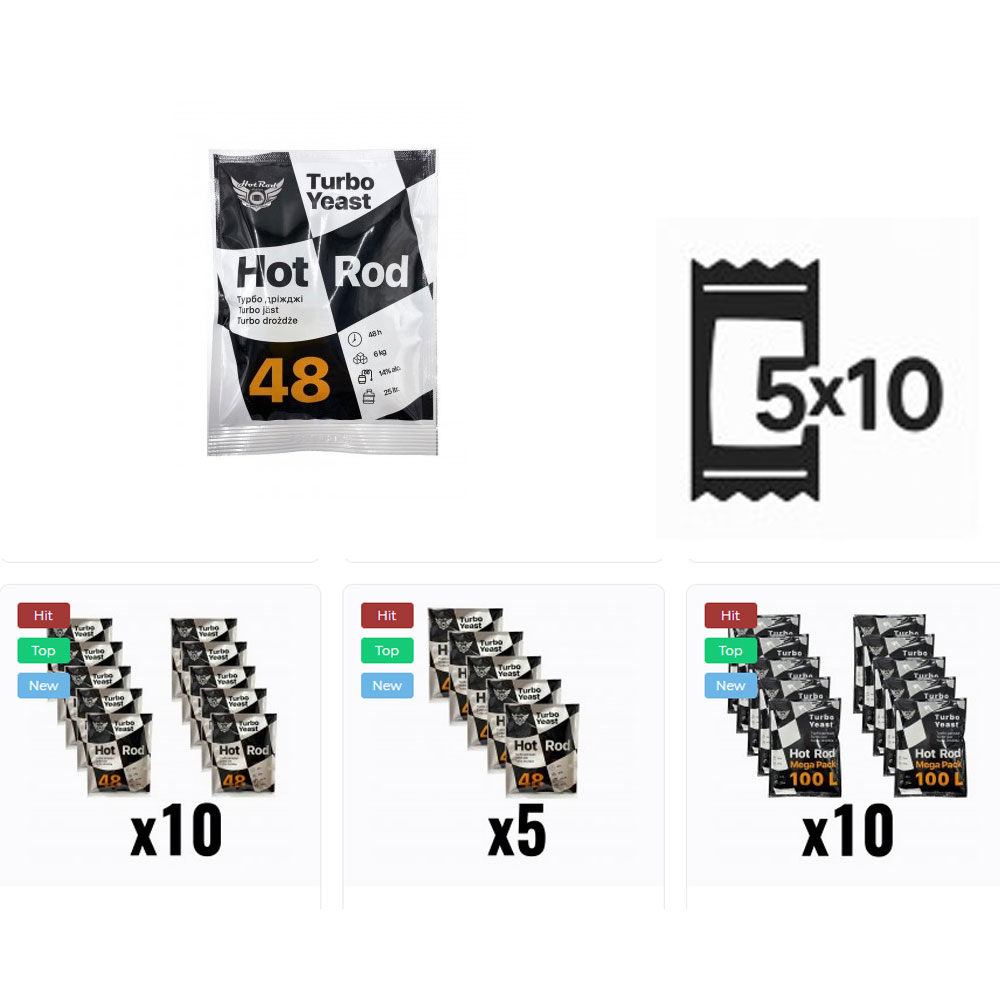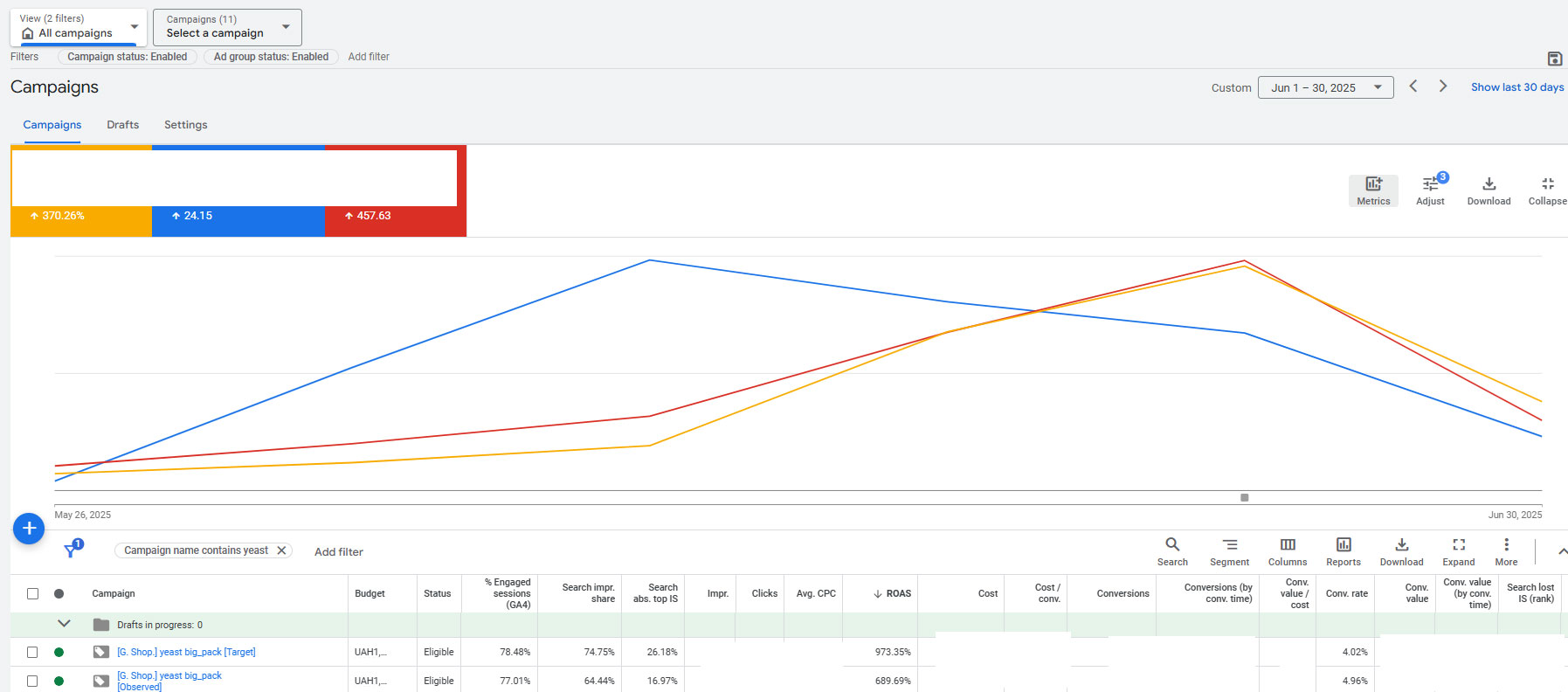Google Ads Case Study: Optimizing Campaigns for Alcohol Fermentation Yeast in a Volatile Market
Client: Manufacturer & Online Retailer of Specialized Fermentation Yeasts
Product Range: Turbo Yeasts, Wine Yeasts
Target Markets: Moonshiners
Timeframe: June – August 2024
Objective: Restore ROAS, increase conversion volume, and stabilize CPC amid declining performance

Background & Initial Challenge
In June 2024, the client approached me as a Google Ads specialist due to a sharp decline in website conversions and a rapid increase in cost per acquisition (CPA). Despite maintaining consistent ad spend, ROAS had dropped from 420% to 260% over the previous 3 months.
The most concerning trend?
📉 Conversions were falling faster than costs were rising — a clear sign of inefficiency in targeting, audience alignment, or auction strategy.
The business sells:
- Turbo yeast (fast-fermenting, high-alcohol-tolerance strains)
- Yeast nutrients and fermentation kits
Previously, the account performed well with manual campaigns and strong impression share. But something had changed.
I began with a comprehensive audit across tracking, structure, and market dynamics.
🔹 Tracking & Data Layer
- Verified Google Merchant Center feed: product titles, availability, pricing
- Audited GA4: confirmed accurate event tracking (view_item, add_to_cart, purchase)
- Reviewed GTM: all Google Ads conversion tags firing correctly
- Checked UTM consistency across campaigns
✅ No tracking issues detected — data was reliable.
🔹 Product & Keyword Review
- Analyzed shifts in bestsellers: demand moved from single yeast packs to bulk and starter kits
- Reviewed ad copy and keyword match types
- Checked Top Impression Share and Absolute Top Impression Share — both had dropped significantly
Instead of blaming “the algorithm,” I dug deeper:
- Why were people clicking but not converting?
- Was traffic quality down?
- Had buyer behavior changed?
I requested historical data on:
- Average Order Value (AOV) by product category
- Conversion rates by audience segment
- Device and geography trends
🔍 Critical Discovery:
While overall traffic remained stable, conversion rate and AOV dropped by ~60% — but only in one key audience segment.
This group used to be experienced home distillers and brewers — technically skilled, high-LTV customers.
Now, the data showed a surge in young urban users searching for quick, cheap fermentation solutions, likely influenced by economic hardship and rising alcohol prices.
📌 Hypothesis: Due to regional instability (ongoing conflict), lifestyle shifts occurred. Former hands-on creators are now displaced or focused on survival — not leisure brewing.
❌ Test #1: Performance Max (PMax) Campaigns
Goal: Use Google’s AI to scale conversions on best-selling yeast products.
Setup:
- PMax campaign focused on top SKUs: Turbo Yeast 48h, Wine Yeast Kit
- High-quality assets, clear CTAs, proper conversion tracking
Result: ❌ Failure after 12 days
- CPC spiked to $0.7 (vs. historical $0.13)
Traffic came from irrelevant queries: yeast for beer, yeast for wine, yeast for bread, spirit
Automated bidding pushed into high-cost, low-relevance auctions.
💡 Lesson: Despite continuously excluding irrelevant phrases, the process yielded no meaningful outcome.
❌ Test #2: Manual CPC + Segmentation Script (Mike Rhodes Model)
Approach:
Used custom scripts to split campaigns into:
- Profitable
- costly
- flukes
- meh
- zeroconv
- zombie
Applied manual CPC with bid adjustments.
Result: Slight improvement, but not enough
- Best ROAS: ~310% (still below 400% target)
- CPC remained high due to auction pressure
- Conversion volume flat
💡 Lesson: Manual control helps, but without audience-level separation, you’re still bidding against yourself and the wrong users.
As performance from the once-effective audience declined, I identified the need to realign targeting. I rebuilt the campaign architecture around product category and audience intent.
✅ New Campaign Structure (Launched July 2024)
1. By Product Category:
- [Campaign] Turbo Yeast (Fast Fermentation)
- [Campaign] Yeast Nutrients & Additives

Structure
2. By Audience Intent:
[Campaign A] Shopping | Turbo Yeast → Targeting High-Intent in-market audience
[Campaign B] Shopping | Turbo Yeast → Audiences (all eligible audiences with observation)
→ 90% bid adjustment down for audiences in Campaign A
→ Excluded branded terms to avoid cannibalization
🎯 Rationale: Protect high-LTV customers from inefficient broad traffic. Use separate campaigns to capture new users at lower cost.
Used Target Impression Share bidding with clear KPIs:
- >60% Impression Share on Top of Page
- >15% Absolute Top Impression Share
- Outranking share vs competitors: > 30%

Competition
Instead of relying solely on ad optimization, I worked with the client to implement a product-level strategic change: repositioning how yeast was packaged and sold.
Historically, the main SKU was a single packet of turbo yeast (60g) — suitable for 25 liters of mash. While this worked for trial users, it didn’t reflect real user behavior: experienced fermenters typically produce 50–100+ liters at a time and need multiple packets.
So we introduced a new bulk-ready offer directly in the product catalog:
✅ "5-Pack Turbo Yeast Bundle"
- Enough for 125 liters of mash
- Priced at 12% discount vs. buying 5 singles
- Clear label: x5
This wasn’t just a bundle — it was a new default offer, promoted as the main variant in Google Ads and on the product page.
- Set higher bids on the 5-pack SKU using portfolio bid strategies

From 1 to 5 (10)
Instead of relying solely on ad optimization, I worked with the client to implement a product-level strategic change: repositioning how yeast was packaged and sold.
Historically, the main SKU was a single packet of turbo yeast (60g) — suitable for 25 liters of mash. While this worked for trial users, it didn’t reflect real user behavior: experienced fermenters typically produce 50–100+ liters at a time and need multiple packets.
So we introduced a new bulk-ready offer directly in the product catalog:
✅ "5-Pack Turbo Yeast Bundle"
- Enough for 125 liters of mash
- Priced at 12% discount vs. buying 5 singles
- Clear label: x5
This wasn’t just a bundle — it was a new default offer, promoted as the main variant in Google Ads and on the product page.
- Set higher bids on the 5-pack SKU using portfolio bid strategies
Result
- AOV ↑ (+33%)
- Bundle became 30% of total yeast sales
- Higher margin absorbed slightly elevated CPCs
✅ ROAS exceeded 750% across non-branded campaigns
✅ 16% increase in conversions despite lower overall spend
✅ Sustainable structure

ROAS | Conversions | AOV
Key Takeaways for Google Ads Specialists
1. PMax is Risky for Yeast & Fermentation Products
Google often misinterprets product intent. Manual control is safer.
2. Audience Segmentation Is Non-Negotiable
In volatile markets, who sees your ad matters more than what they search for.
3. Bundles Increase AOV & Justify Higher Bids
Promote kits or bulk sets — they convert better and improve margins.
4. Use Negative Keywords
Filter out low-intent, high-risk queries to protect brand and budget.
5. Structure Prevents Self-Competition
Separate campaigns by product type + audience to avoid internal bidding wars.
